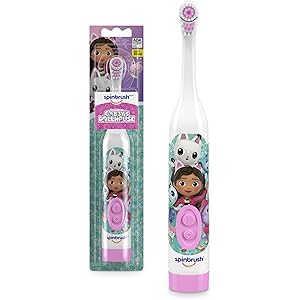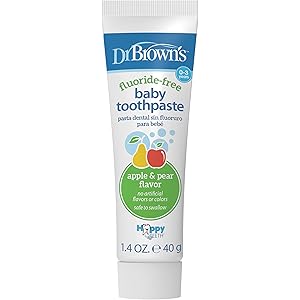Dr. Brown's Fluoride-Free Baby Toothpaste, Safe to Swallow, Apple Pear, 1-Pack, 1.4oz/40g, 0-3 years
$4.49 (as of October 25, 2025 00:06 GMT +00:00 - More infoProduct prices and availability are accurate as of the date/time indicated and are subject to change. Any price and availability information displayed on [relevant Amazon Site(s), as applicable] at the time of purchase will apply to the purchase of this product.)What is Chorionic Villus Sampling?
Chorionic villus sampling (CVS) is a prenatal test that involves taking a sample of tissue from the placenta, known as chorionic villi. This procedure is typically performed between the 10th and 13th weeks of pregnancy and is used to diagnose certain genetic conditions in the fetus. CVS can provide valuable information about the baby’s health and genetic makeup, allowing parents to make informed decisions about their pregnancy.
How is Chorionic Villus Sampling Performed?
The procedure for chorionic villus sampling can be done in two ways: transcervical and transabdominal. In the transcervical method, a thin tube is inserted through the cervix to collect the sample. In the transabdominal method, a needle is inserted through the abdominal wall into the placenta. Both methods are guided by ultrasound to ensure accuracy and safety. The entire process usually takes about 30 minutes, and while some discomfort may be felt, it is generally well-tolerated.
Why is Chorionic Villus Sampling Recommended?
Chorionic villus sampling is often recommended for women who are at higher risk of having a baby with genetic disorders. This includes women over the age of 35, those with a family history of genetic conditions, or those who have had abnormal results from other prenatal tests, such as blood tests or ultrasounds. CVS can detect conditions like Down syndrome, cystic fibrosis, and other chromosomal abnormalities, providing crucial information for expectant parents.
What are the Risks of Chorionic Villus Sampling?
While chorionic villus sampling is generally safe, it does carry some risks. These can include a small chance of miscarriage, infection, or injury to the fetus. The risk of miscarriage after CVS is estimated to be about 1 in 100. It is essential for parents to discuss these risks with their healthcare provider to make an informed decision about whether to proceed with the test.
What to Expect After Chorionic Villus Sampling?
After the chorionic villus sampling procedure, patients are typically monitored for a short period to ensure there are no immediate complications. Some women may experience mild cramping or spotting, which is usually normal. Results from the test can take about a week to arrive, and healthcare providers will discuss the findings with the parents, explaining what the results mean for the pregnancy.
Interpreting Chorionic Villus Sampling Results
The results of chorionic villus sampling can be either positive or negative for genetic conditions. A positive result indicates that a genetic disorder has been detected, while a negative result suggests that the tested conditions are not present. However, it is important to note that CVS does not test for all possible genetic disorders, and further testing may be recommended based on the results.
Chorionic Villus Sampling vs. Amniocentesis
Chorionic villus sampling and amniocentesis are both prenatal diagnostic tests, but they differ in timing and procedure. CVS is performed earlier in the pregnancy, typically between 10 and 13 weeks, while amniocentesis is usually done between 15 and 20 weeks. Additionally, CVS samples placental tissue, whereas amniocentesis involves sampling amniotic fluid. Both tests have their own risks and benefits, and the choice between them should be made in consultation with a healthcare provider.
Preparing for Chorionic Villus Sampling
Preparation for chorionic villus sampling may involve several steps. Patients are usually advised to discuss their medical history with their healthcare provider and understand the reasons for the test. It is also recommended to avoid certain medications and to follow any specific instructions given by the healthcare team. Being well-prepared can help alleviate anxiety and ensure a smoother testing process.
Emotional Considerations of Chorionic Villus Sampling
Undergoing chorionic villus sampling can be an emotional experience for expectant parents. The uncertainty of test results can lead to anxiety and stress. It is important for parents to seek support from healthcare providers, family, and friends during this time. Counseling or support groups may also be beneficial for those who need to process their feelings and concerns about the testing and potential outcomes.
Future Implications of Chorionic Villus Sampling
The implications of chorionic villus sampling extend beyond the immediate results. For parents who receive a positive diagnosis for a genetic condition, it opens up discussions about the future, including potential treatment options, further testing, and the possibility of making decisions about the pregnancy. Understanding the implications of CVS can empower parents to make informed choices that align with their values and circumstances.



